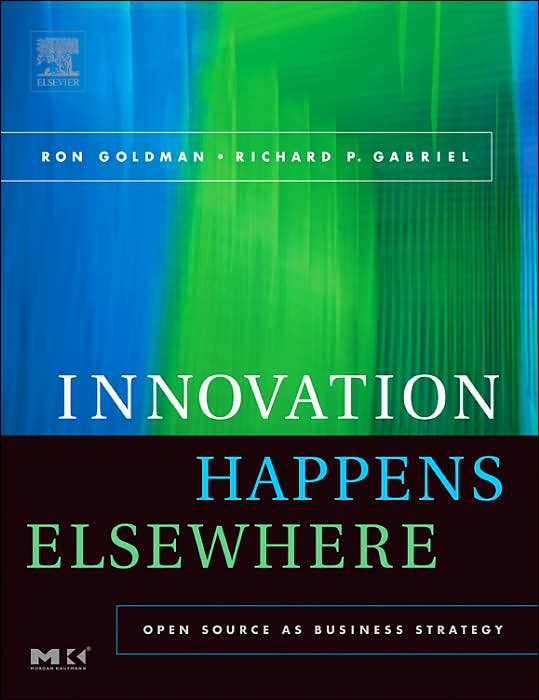|
Previous Table of Contents Up Next Can the Commons Make a Difference?Although the commons we're talking about includes other things, it is largely the commons of source code licensed in such a way that many can work on it at the same time. The best-known software in this commons is Linux, which is a sort of Unix operating system. Linux can be viewed as a narrow technological phenomenon--of importance to some companies in the technology sector, but not affecting regular people in their homes and lives. To understand how the commons can benefit ordinary people, it's easier to look at other things in the commons, such as the World Wide Web. The Web is interesting because it is not only within the commons--built by a group effort--but forms part of the infrastructure of the commons. It's worth looking at the growth of the Web a bit to begin to understand the power of open source for business. For many, the Web is the first authority--not simply ordinary folks but professionals turn to the Web for information. Nearly all the scientific and technical journals the authors read are available online. Many people and most companies and other organizations put up websites and keep them up to date. Some are as ordinary and prosaic as a man talking about his hobbies and cats, and others are elaborate collections of essays and artwork or opinions and software. Today there are approximately 3 million distinct public websites,1 and on average each site has about 450 pages, meaning there are nearly 1.5 billion web pages. And this doesn't count web dark matter, which is information stored in databases that is served up using dynamic web page technology. The Web was built as a volunteer effort--there was no central planning, only a set of simple protocols and tools, and the idea took off on its own. The core of the Web is a protocol called http (HyperText Transfer Protocol), which enables one computer to request of another a particular resource--usually a web page--via the Internet. This protocol (http) works on top of the basic Internet protocols, and it can be considered a peer of other layered protocols such as email (smtp, Simple Mail Transfer Protocol) and file transfer (ftp, File Transfer Protocol). Three more things were needed from the infrastructure. The first was a way to describe web pages that was not based on a proprietary format. The choice here was the HyperText Markup Language (html). This was originally an extremely simple language--it was not capable of displaying precisely typeset material natively, but it was a language easy to learn. The second was a way to locate pages to display that didn't depend on what computer or operating system was being talked to--the Universal Resource Locator (URL). The third was the web browser. The keys to the remarkable success of this approach lay in the web browser more than in the other components. The first key was that the early web browsers tried their best to display something regardless of how imperfect the html describing the requested page was. The second was that web browsers could display the source html for the page being displayed. Using this feature, amateur web designers could find a page whose layout they liked and then mimic it for a page of their own. Even if they were not too careful in mimicking, the tolerant web browsers would probably show enough of what they intended to get by. With this tolerance for imperfectly described pages and such gifts as the early websites that the early creators provided, the Web took off in ways that couldn't have been foreseen. People used existing websites and their openly viewable source code to clone (with variations) web page design and put out their own content. People shared their hobbies and expertise. Organizations with special interests educated the public, and clubs spread interest in their club activities. Scientists and engineers started using the Web to disseminate their research results. Term papers, dissertations, and manias started appearing on the web, so that by 2003 there was almost literally no corner of human knowledge that was not at least mentioned on the Web. With the advent of search engines, it's now possible to find this information easily. It used to take a prodigious and obsessive person to be able to tell you the names of the poem and the poet given only a flawed memory of a line, but now anyone can answer such questions within 5 minutes given a browser and Internet connection. This growth came predominantly from the individual efforts of volunteerism. In many cases today, individuals pay to put up their websites--in other words, they pay to give something away. The Web has been used for independent news sources, and there are numerous examples in which web-based action has changed the course of history. There is little doubt that the Web has transformed how people work and interact. Weblogs (simple journal mechanisms) are flourishing and gathering enough power to affect politics, and wikis (reader-extendable websites) are being used to construct grassroots dictionaries and encyclopedias. 1. These data are from the OCLC Web Characterization Project (http://wcp.oclc.org). A public site is one that is openly available for anyone. There are in addition 2.5 million private sites that are password or payment protected, including about 100,000 adult sites, and another 3 million provisional sites that are under construction.
|
|||
|
|


